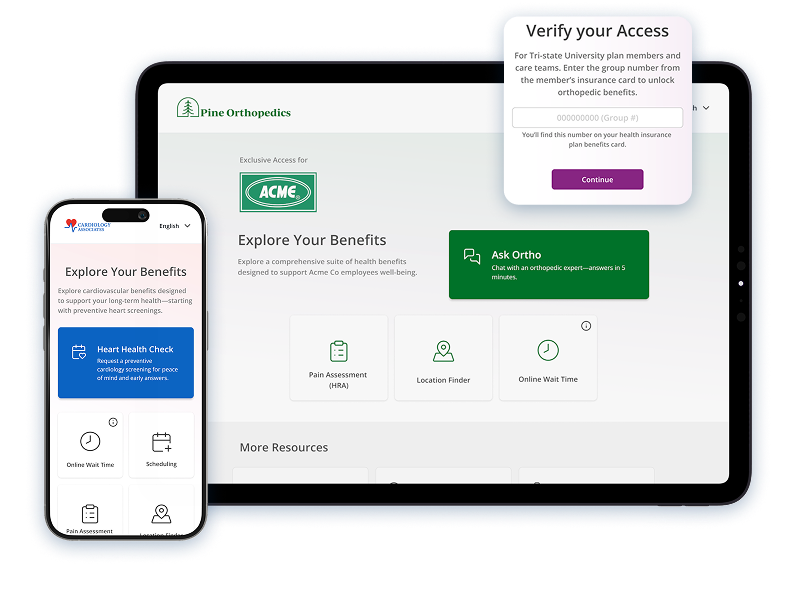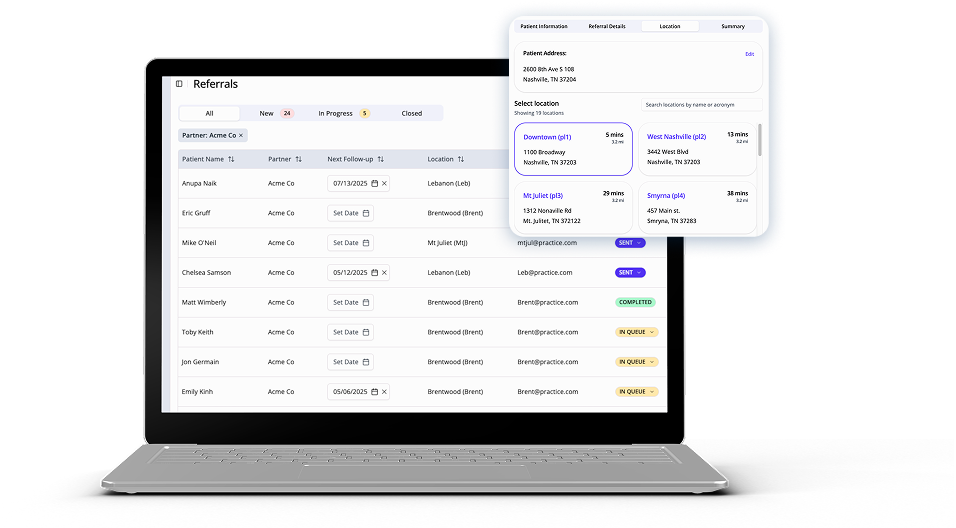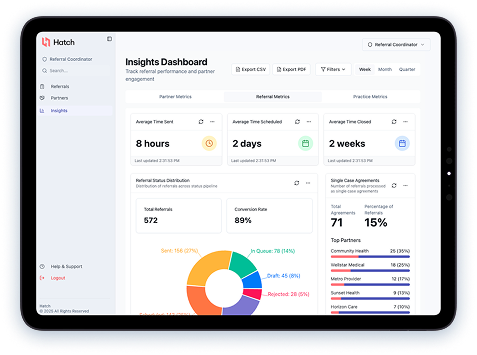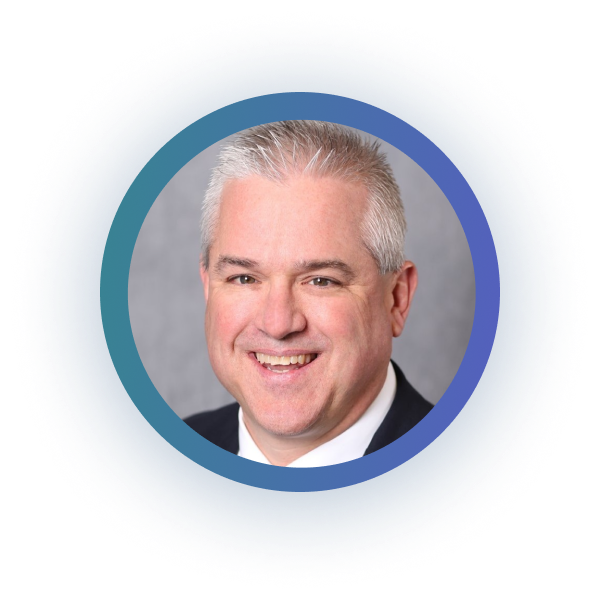In July, we hosted our Q3 Platform Showcase, where we unveiled the next evolution of the Hatch platform.
Our CEO, Chris Poole, kicked things off by highlighting a critical shift in the healthcare landscape:
The traditional ways of generating referrals are no longer enough to sustain growth. Studies show that 50% of the 100 million annual referrals to specialists go uncompleted. Furthermore, 37% of employers are now using navigation tools to guide their employees' care. It's clear that a new approach is needed.
The future of growth lies in the specialty group's ability to attract, convert, and operationalize non-traditional, high-yield referral sources.
This market shift set the stage for our latest platform evolution, designed to empower you to win in this new channel-based referral ecosystem.
Our VP of Product, Justin Hoffman, walked through our expanded platform, which is purpose-built to help you create, manage, and measure your modern referral growth efforts. We've evolved from chat to a channel & partner-centric solution with three core components.

We’re excited to introduce Hatchways, which are customizable digital front doors for your practice. You can create unique, co-branded experiences for specific partners like employers or navigators, highlighting targeted services and resources.
These dedicated pathways allow you to offer a member-level experience, featuring services like clinical chat, priority scheduling, and digital referral intake. Because each partner gets their own link, you can easily deploy them on your website, in QR codes on flyers, in email campaigns, or even within an employer's HR system.

While aggregator, navigator, and employer channels bring qualified, activated patients, they also come with complexity. To address this, our platform now centralizes these intricate referral workflows.
Special instructions for each partner are attached directly to their referrals, ensuring your team always knows the specific requirements, like a one-hour confirmation time or a 24-hour scheduling window. This eliminates the need for juggling spreadsheets and helps reduce referral triage time by a significant portion—we've seen a 33% reduction with one large practice customer. It also helps you track the patient's entire journey, from scheduled to surgery conversion.

With digital intake and centralized workflows, you gain access to powerful new insights. Our dashboards provide a clear view of your referral landscape, showing you which partners and channels are driving the most volume and yielding the highest value.
You can track key metrics like your team's triage time, time to schedule, and surgical conversion rates for each partner. This data not only helps you understand your internal performance but also empowers you to have more strategic conversations with your referral partners, strengthening those relationships by demonstrating the quality and efficiency of the service you provide.
Our event culminated in a panel discussion with three innovative CEOs who are actively navigating this new growth landscape.
They reinforced the need for a modern approach and shared how they are focusing their efforts.

Troy Simonson, CEO of Proliance Surgeons, emphasized that as they engage with more value-based aggregators and navigators, the complexity becomes unmanageable without a centralized system. Each partner has a different pathway into their large practice, creating internal challenges. By centralizing these "B2B" referral workflows with Hatch, they've created efficiencies, reduced the time it takes to get a patient to the right spot from 15 minutes to 5, and improved the experience for both the patient and the internal care teams.
Quotable moments:

In a market like Texas where patient volume isn't the primary issue, Anthony Brooks, CEO of OrthoLoneStar, is focused on strategic growth and optimizing patient yield. They use Hatch to power "QuickOrtho," a concierge access program for select employers. This strategy allows them to provide a higher level of service to attract the specific types of patients they want from a payer mix standpoint, effectively putting these high-value relationships at the front of the line.
Quotable moments:

Rich Green, CEO of DMOS, explained that his practice has invested heavily in digital access to win in a competitive market. Their philosophy is that the future patient is a consumer who expects to interact via a screen. By making it easy for patients to get information and access care through their Hatch-powered virtual platform, they've seen great growth in their urgent injury clinics. This digital-first approach simplifies the patient journey and creates a strategic advantage that is already generating interest from other healthcare partners in their market.
Quotable moments:
We are incredibly excited to continue building the future of referral growth with all of you. If you're ready to explore how our evolved platform can help you win the channels you care about, our team would love to connect and discuss it in more detail.
